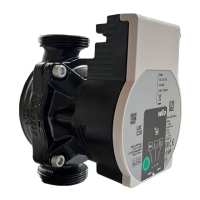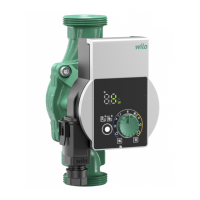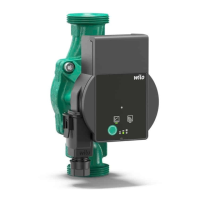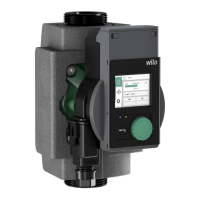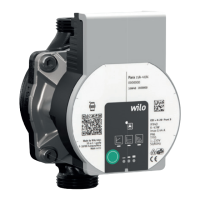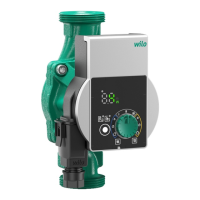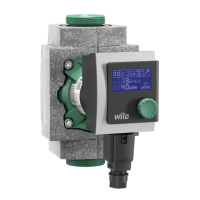●
The power cord must not be
bent, tied, pulled
or twisted by force.
Electric leakage,
electric shock, or fire
can occur.
TRANSPORTATION AND INSTALLATION
●
When the power cord is extended, a voltage drop
that keeps the pump from operation may be caused.
Refer to the table for extended power cord.
WARNING!
AC220V
power cord
or plug
●
Use a rated outlet with
voltage (220V) fluctuation
of less than
±
10%.
●
To prevent electric shock,
never plug in a power
cord under wet
conditions.
●
Install the pump where the pump can be
conveniently checked or
repaired after installation.
If the space for the pump
is narrow, make the room
as described on the figure.
●
Concrete the foundation with cement to avoid
pump slant.
Concrete
Foundation
over 30cm
over 30cm over 30cm
●
When the pump is highly likely to suck in dust
or foreign material, install a sand filter.
Failure to do so may cause a decline
in pressure and quantity
of pumped water, and
malfunction of the inverter.
●
Install a stop valve on the suction side and the
discharge side of the pump
for easier pump maintenance.
Stop valve
Stop valve
CAUTION!
Length of power cable
shorter than 10
m
shorter than 200
m
nominal dimension of the cable
larger than 1.5
㎟
larger than 2.0
㎟
●
Before installation, repair or removal
of the pump, the power supply must be
disconnected.
●
Install a breaker of electric leakage
of under 30mA of rated sensitivity
to prevent electric shock.
Breaker
●
Pay special attention to extensions of the power cord.
Any electric leakage or disconnection in the extension
may cause electric shock.
●
How to extend the power cord.
①
Peel off the rubber/plastic insulation of the cable
as long as the connection terminal is.
② Insulate the connection and cover it with rubber tape.
Then tightly cover it over four times
with friction tape.
●
Don’t clasp the power cord in transportation
and installation.
The damaged cord may cause
electric leakage or shock.
Breaker
6
Sand filter
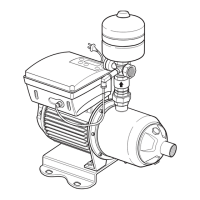
